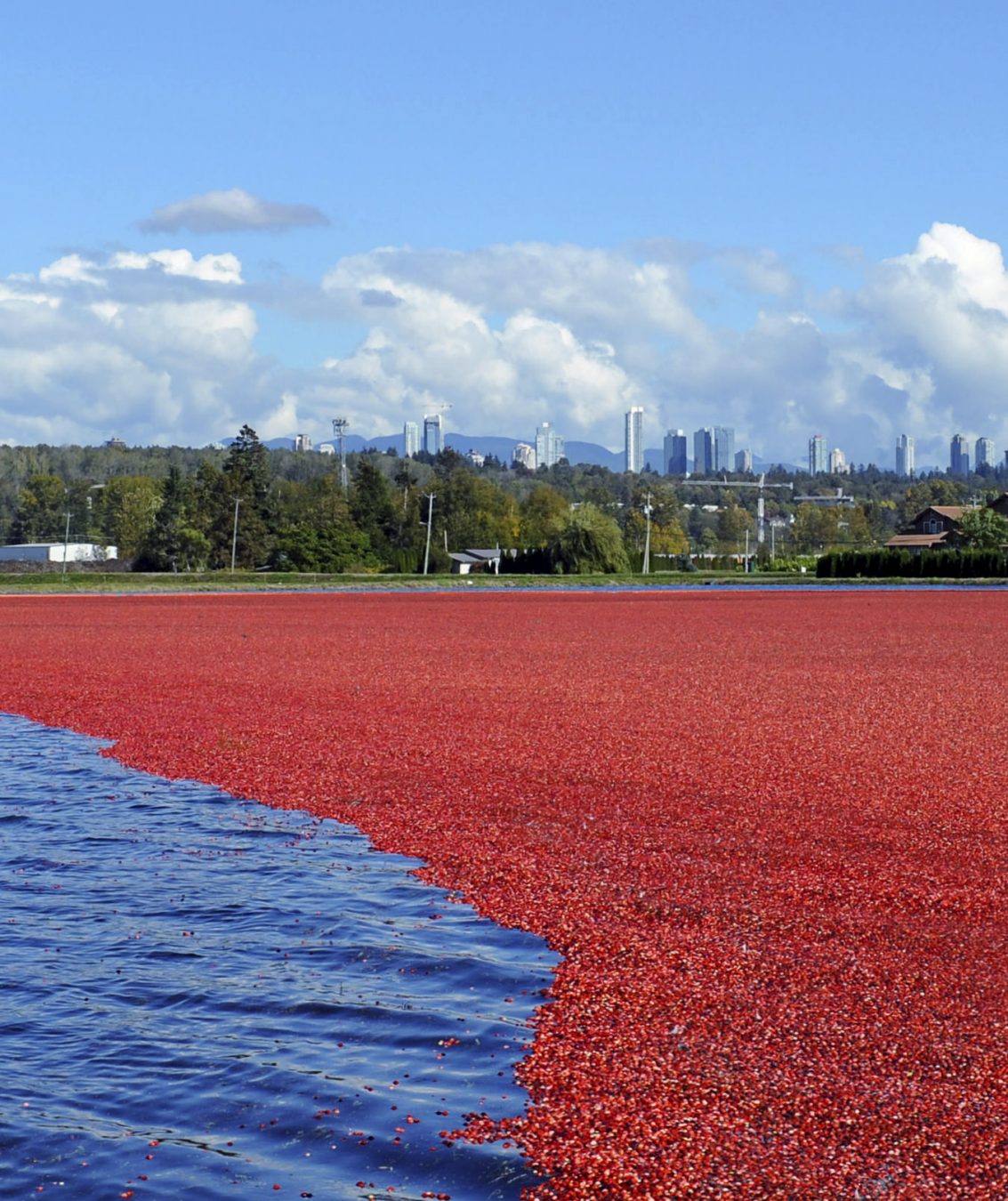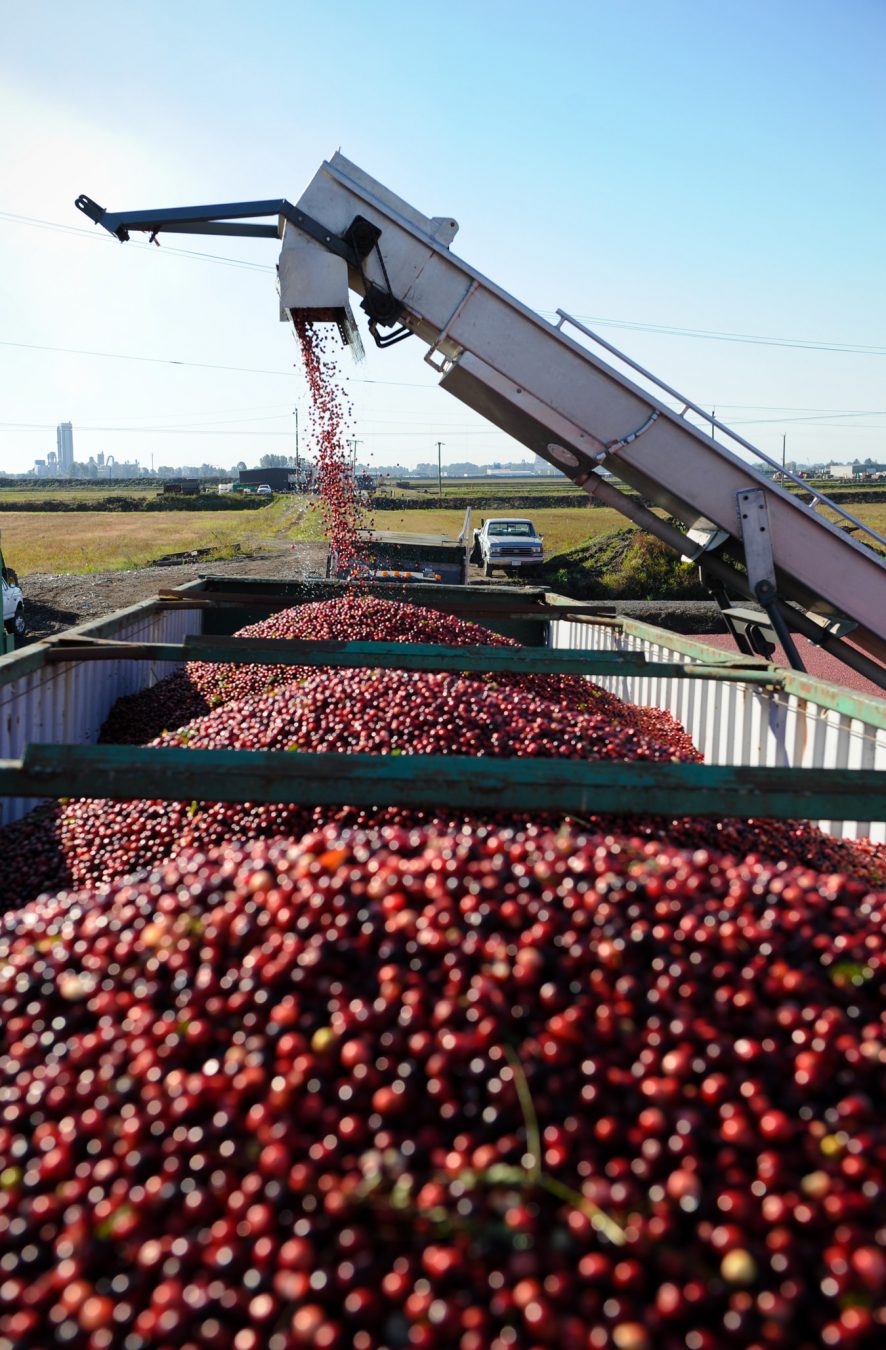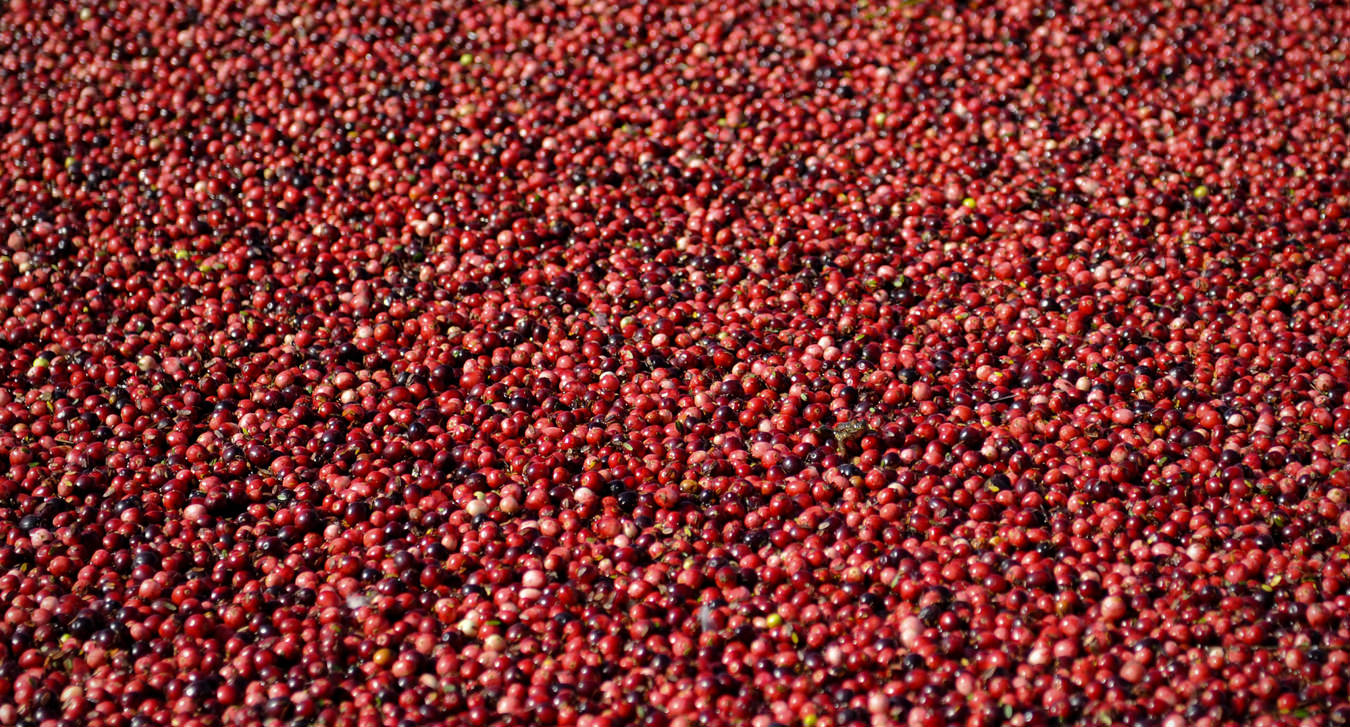It’s a scene you wouldn’t expect, barely a kilometre from the rough and tumble roar of the Knight Street Bridge. But the crimson swaths of cranberry fields that extend almost from the Fraser River’s North Arm are a vivid reminder that most of Richmond was built on farming.
The May family has been farming in the city for more than three generations, or for over 100 years. In that time, they’ve shifted from dairy to cranberry, building their operations into being one of Ocean Spray’s major suppliers.
Down the quiet road that divides the Agricultural Land Reserve (ALR)-protected fields (meaning their priority use is agriculture) from container yards and warehouses is a works yard and repurposed bungalow that serves as the family’s offices. “This year’s harvest isn’t that much different from others,” says Derek May, whose father established Mayberry Farms, known as one of the region’s most prolific growers. “The weather’s really important during pollination, so the bees can do their work while the flowers are there. This year, early on, we had a pretty good spring. June was kind of wet and that hindered some crop. But now with the newer, early ripening varieties, it’s fine.”
Cranberries are indigenous to North America, along with blueberries and Concord grapes. As a shrub with trailing vines, Oxycoccus thrives in acidic bogs found in cooler parts of the Northern Hemisphere, and Richmond’s marshlands offer a uniquely perfect spot for their growth. While some East Coast plantings go back 150 years, May’s crops were some of the earliest in the region. “It was something new. At the time, my dad was big into dairy, as well as strawberries and blueberries,” says May. But the security of Ocean Spray always taking the fruit was an appealing reason to start farming cranberries. It also didn’t require the same amount of labour intensity.
The dormant vines reappear in the spring. Prior to harvest, May says the water (which all comes from the Fraser) is pumped to a certain level that just covers the vine. Workers in waders guide harvesters through the flooded fields that knock the fruit off; the floating berries have to be elevated into trucks in good condition. “Wind is really important to help do that,” says May. “You can use booms, but some of the fields are way too large for that.” When the berries are released from the vines, there is a brief window in which they remain of the pristine quality required. “You really want to have them to the receiving station within four days,” says May. Once Ocean Spray has them, they’re frozen within 24 hours.
May says his favourite way to eat a cranberry is “right out of the field. Fresh. You learn how to eat it. It’s a little bitter, but you can learn to like it.” He knows his family is fortunate to be able to reap the benefits that the ALR has handed down. “I feel so lucky. It’s our way of life, and I’d like to be able to pass that on to my kids,” he says. “If you didn’t have the community feel that we have as a family out here, I’m not sure you wouldn’t have seen this already sold. If this wasn’t where we grew up, how we’ve been raised, I’m not sure the fields would still be here.”














